Mediocre jobs growth in NC under tax-cutting regime
In 2013, the NC legislature started cutting taxes (mostly for big corporations and wealthy people). Most years since have NC lawmakers continue to divert public funds from things like schools, childcare, broadband, water quality, and public safety, to the pockets of out-of-state corporations and the wealthy few. These cuts also put more of the burden on middle- and low-income taxpayers while letting their richer neighbors off the hook. This post is part of a series bringing light to how tax cuts have failed to deliver promised benefits while undermining our ability to pay for things North Carolinians need.
North Carolina’s economic track record since tax cuts took effect has been remarkably unremarkable. We’ve failed to match the pace of growth in previous economic cycles, tracked right along with most of our neighbors in the Southeast, and have fallen behind some of our chief economic rivals.
Let’s get this straight: State tax rates have never been a chief driver of economic performance. Companies care a lot more about schools, roads, research and development capacity, broadband, access to customers, the cost of living, and a host of other economic fundamentals than they do about state tax rates. No surprise then that North Carolina’s record of jobs creation both before and after tax cuts took effect largely mirrored what was happening in the states around us.
North Carolina’s jobs engine was running a few cylinders down after tax cuts compared to the previous few economic cycles. The fastest pace of annual job growth between when tax cuts took effect in 2014 and when COVID-19 upended the world was just over 3 percent. That’s a decent clip, but significantly below the 3.9 percent we reached in 2006 or the 3.7 percent we hit a few times in the mid-1990s. Between 1990 and 2013, there were 47 months that saw faster annual job growth in North Carolina than the best month between when tax cuts started phasing in and the onset of COVID-19.
What’s more, after tax cuts, North Carolina has fallen behind some of our closest neighbors. Between 2014 and the start of COVID-19, Georgia, South Carolina, and Tennessee all created jobs at a faster clip than North Carolina. Looking further back, North Carolina has lost the lead it held over many of our peers in the Southeast. Of our immediate neighbors, only Georgia created jobs at a faster clip than the Tar Heel state between 1990 and when tax cuts started to bite.
There’s even more evidence that you can’t cut your way to prosperity in the comparison between California and North Carolina between 2014 and the start of COVID. Not only is the Golden State a favorite whipping boy for tax cut champions, it actually increased taxes on rich people to fund their recovery from the Great Recession at the same time that leaders here were slashing taxes on the wealthy and profitable corporations. If tax rates were the magic economic pill, North Carolina should have crushed California in the following years. What happened instead is that California added jobs significantly faster between 2014 and the start of COVID-19. Particularly as North Carolina increasingly competes for high-tech jobs (and the workers needed to do them), we’ll need to boost investments in education, research and development, digital infrastructure, and social amenities like parks, or risk losing the gains made over the past several decades.
Tax cuts proponents made a lot of big promises that just never came true. We’re eroding the economic foundations that made North Carolina a regional leader without even seeing a short-term economic boost. The longer we continue to redirect funds to the wealthy few from economic fundamentals like education, child care, and infrastructure, the more we risk losing out to our neighbors and competitors across the country.


